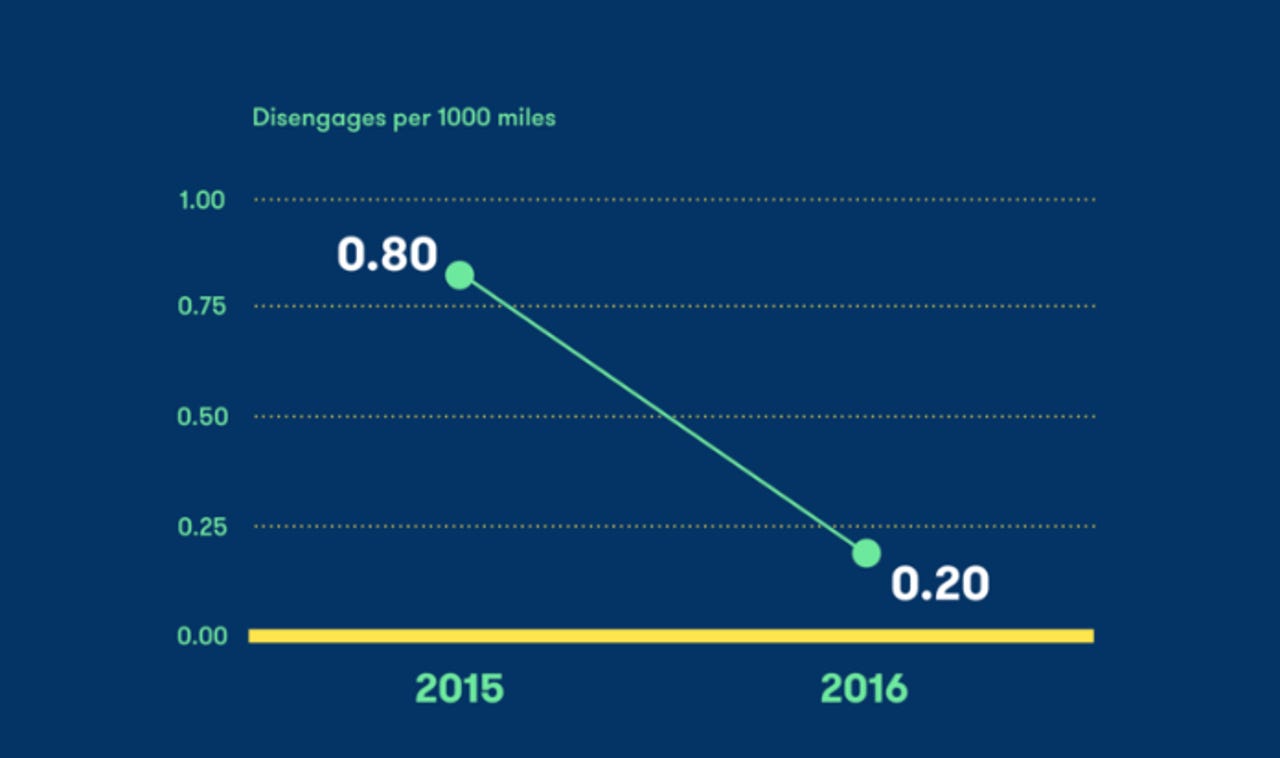Google's self-driving Waymo cars: Humans are having to grab the wheel way less


Google reports a dramatic decrease in the number of times humans needed to take control of its autonomous cars.
Google's autonomous Waymo cars have hugely cut the number of times a human has to take over the controls to avert danger or correct a glitch.
The California Department of Vehicles has published its autonomous vehicle disengagement reports for all companies testing vehicles on the state's public roads last year. The reports show how many times human drivers needed to take control from the vehicle's autonomous mode.
Waymo's report in particular shows a massive decline in disengagements, despite boosting miles travelled in the state by 50 percent compared with 2015.
Over the 635,868 miles Google's autonomous cars drove on California's roads last year, drivers needed to take control 124 times, down from 341 instances in 2015 when the vehicles drove 424,331 autonomous miles.
As Google highlights, disengagements per 1,000 miles have declined 75 percent year over year, from 0.8 in 2015 to 0.2 in 2016.
The disengagement figures include instances when the driver takes over either due a fault in the autonomous technology or for safety reasons, for example, because of another road user's behaviour.
The rate that drivers had to assume control due to a technology failure also declined by 89 percent, from 0.64 in 2015 to 0.07 in 2016, while disengagements for safety reasons fell by a smaller 19 percent over the period, from 0.16 to 0.13.
However, the main reason Waymo's human drivers needed to take the controls was "software discrepancy", which accounted for 50 instances when the autonomous system was disengaged, followed by 30 times when the vehicle made an "unwanted maneuver", and 20 times there was a "perception discrepancy".
Dmitri Dolgov, Waymo's head of self-driving technology, said he is "happy with our progress" and optimistic that self-driving cars can soon make a difference to road safety.
"This four-fold improvement reflects the significant work we've been doing to make our software and hardware more capable and mature. And because we're creating a self-driving car that can take you from door to door, almost all our time has been spent on complex urban or suburban streets," he wrote.
"This has given us valuable experience sharing the road safely with pedestrians and cyclists, and practicing advanced maneuvers such as making unprotected left turns and traversing multi-lane intersections."
Some vehicle makers reported fewer disengagements but none came close to the number of autonomous miles Google's Waymo reported on California's roads.
Tesla's report shows its vehicles were disengaged from autonomous mode 177 times over 550 miles. Mercedes reported 336 disengagement over 673 miles in autonomous mode. BMW reported one disengagement over 638 miles.
Each company in California's autonomous driving program is required to submit disengagement reports by January 1, as well as report any traffic incidents.